-

Extract from: Skotnes, P & Stow, G.2008. Unconquerable Spirit : George Stow’s History Paintings of the San . Johannesburg, South Africa: Jacana. 34
-
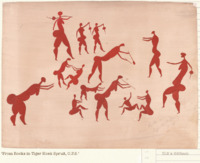
Extract from: Skotnes, P & Stow, G.2008. Unconquerable Spirit : George Stow’s History Paintings of the San . Johannesburg, South Africa: Jacana. 34
-

Description : 1. xam (Lit., "Lion") The whirring instrument made by my informant., 2. stick-handle of xam, (3. connecting string of xam), ≠nin, The name of the tree used for making the xam
-
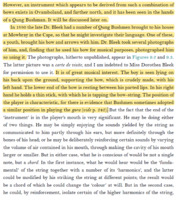
Page from Kirby, P. 1934. Musical Instruments of the Indigenous People of South Africa . Third edition. Johannesburg: Wits University Press.
-

“|uma was one of the two younger !kun boys who arrived in Mowbray on the 25th of March 1880. |uma (and the youngest boy Da) were placed in the Bleek and Lloyd household after permission was granted by the Cape ‘Native Department’. Lloyd notes on the reverse of a photograph of |uma (in the collection of the NLSA) that |uma is ‘apparently’ between 12 and 14 years of age.
|uma left Mowbray on the 12th of December 1881 and was found employment by an official of the ‘Native Department’ Mr George Stevens. He was not able to contribute much narrative to Lucy Lloyd, and the contributions he did make are limited to some 58 pages of dictation, but he did many drawings and water-colours depicting examples of fauna and flora from his homeland”
(The Digital Bleek and Lloyd 2021).
-
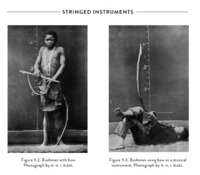
Plate from Kirby, P. 1934. Musical Instruments of the Indigenous People of South Africa . Third edition. Johannesburg: Wits University Press.
-
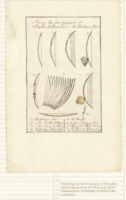
‘Shewing the Development of Stringed Instruments from the Nushman-Bow’ Watercolour, University of Cape Town.
-
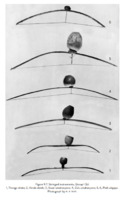
The Kirby collection, housed in the South African College of Music, UCT consists of more than 600 musical instruments, most of which were used in southern Africa before 1934, many pre-dating urbanization. Starting as early as 1923, the Scottish historian and musicologist, Percival Kirby, then Professor of Music at the University of the Witwatersrand (and a colleague of Raymond Dart), observed the music cultures of indigenous South Africans through a series of field trips conducted during university vacations (Nixon in Kirby 2013: ix). He collected these instruments and categorised them using a Western system for classifying musical instruments and the principles on which they were based. Stipulating three categories (percussion - ‘rattles and clappers’, ‘drums’, ‘xylophones and sansas’, and ‘bull-roarers and spinning-disks’; wind instruments – ‘horns and trumpets’, ‘whistles, flutes, and vibrating reeds’ and ‘reed flute ensembles’; and stringed instruments) these divisions and their subsequent curation in the SACM encourages a ‘comparative’ viewing framework. Comparative displays were very popular in anthropology in the 19th and early 20th century and grouping objects sourced from various communities worldwide according to ‘type’ in relation to western versions served to enforce ideas of Social Darwinism, depicting a scale of development from what was viewed as ‘primitive’ objects to the more evolved Western versions.
-
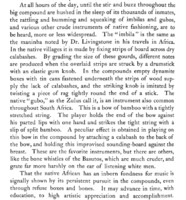
Page from: Williams, G. 1902. The Diamond Mines of South Africa: Some Account of their Rise and Development. New York, London: Macmillan.
-
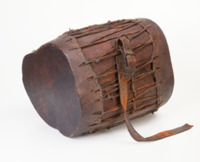
“We understand that this drum was played during the 1906 Bambatha rebellion against British rule and unfair taxation in what was then Natal. Between 3 000 and 4 000 Zulus were killed during the revolt some of whom died fighting on the side of the Natal government. More than 7 000 were imprisoned, and 4 000 flogged. King Dinizulu was arrested and sentenced to four years imprisonment for treason. The belt that the drummer would have been used to wear it is now broken, but the drum would have been used as accompaniment to ingoma dancing, which was/is performed with drums, whistles and often full regimental attire”.
Micheal Nixon, former Curator of UCT’s Kirby Collection (Humanitec 2015)
-
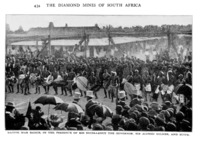
Plate from Williams, G. 1902. The Diamond Mines of South Africa: Some Account of their Rise and Development. New York, London: Macmillan.
-

Pen used by Queen Elizabeth when she signed the visitor’s book in the UCT library in 1947.











